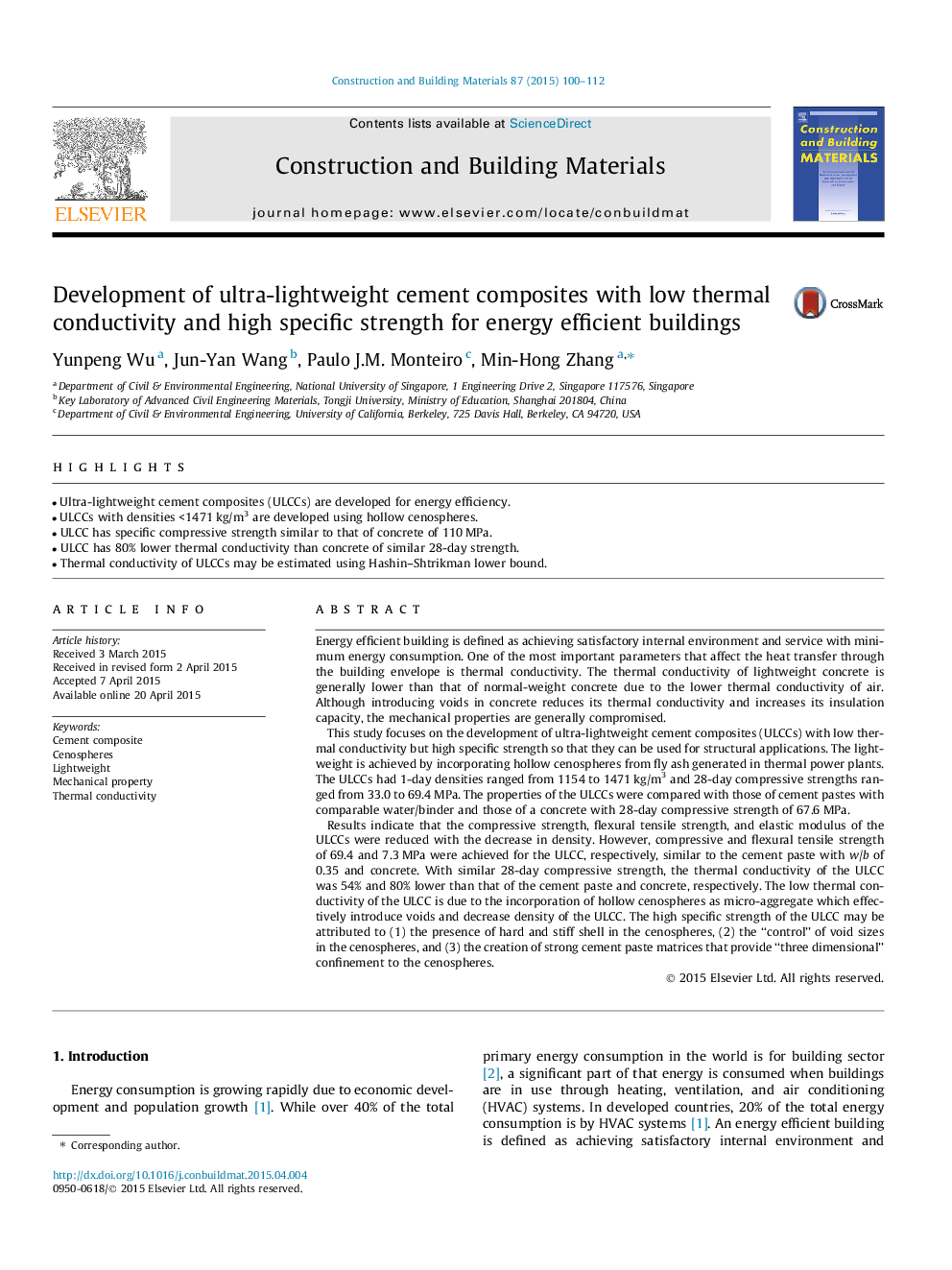| کد مقاله | کد نشریه | سال انتشار | مقاله انگلیسی | نسخه تمام متن |
|---|---|---|---|---|
| 257008 | 503572 | 2015 | 13 صفحه PDF | دانلود رایگان |
• Ultra-lightweight cement composites (ULCCs) are developed for energy efficiency.
• ULCCs with densities <1471 kg/m3 are developed using hollow cenospheres.
• ULCC has specific compressive strength similar to that of concrete of 110 MPa.
• ULCC has 80% lower thermal conductivity than concrete of similar 28-day strength.
• Thermal conductivity of ULCCs may be estimated using Hashin–Shtrikman lower bound.
Energy efficient building is defined as achieving satisfactory internal environment and service with minimum energy consumption. One of the most important parameters that affect the heat transfer through the building envelope is thermal conductivity. The thermal conductivity of lightweight concrete is generally lower than that of normal-weight concrete due to the lower thermal conductivity of air. Although introducing voids in concrete reduces its thermal conductivity and increases its insulation capacity, the mechanical properties are generally compromised.This study focuses on the development of ultra-lightweight cement composites (ULCCs) with low thermal conductivity but high specific strength so that they can be used for structural applications. The lightweight is achieved by incorporating hollow cenospheres from fly ash generated in thermal power plants. The ULCCs had 1-day densities ranged from 1154 to 1471 kg/m3 and 28-day compressive strengths ranged from 33.0 to 69.4 MPa. The properties of the ULCCs were compared with those of cement pastes with comparable water/binder and those of a concrete with 28-day compressive strength of 67.6 MPa.Results indicate that the compressive strength, flexural tensile strength, and elastic modulus of the ULCCs were reduced with the decrease in density. However, compressive and flexural tensile strength of 69.4 and 7.3 MPa were achieved for the ULCC, respectively, similar to the cement paste with w/b of 0.35 and concrete. With similar 28-day compressive strength, the thermal conductivity of the ULCC was 54% and 80% lower than that of the cement paste and concrete, respectively. The low thermal conductivity of the ULCC is due to the incorporation of hollow cenospheres as micro-aggregate which effectively introduce voids and decrease density of the ULCC. The high specific strength of the ULCC may be attributed to (1) the presence of hard and stiff shell in the cenospheres, (2) the “control” of void sizes in the cenospheres, and (3) the creation of strong cement paste matrices that provide “three dimensional” confinement to the cenospheres.
Journal: Construction and Building Materials - Volume 87, 15 July 2015, Pages 100–112
